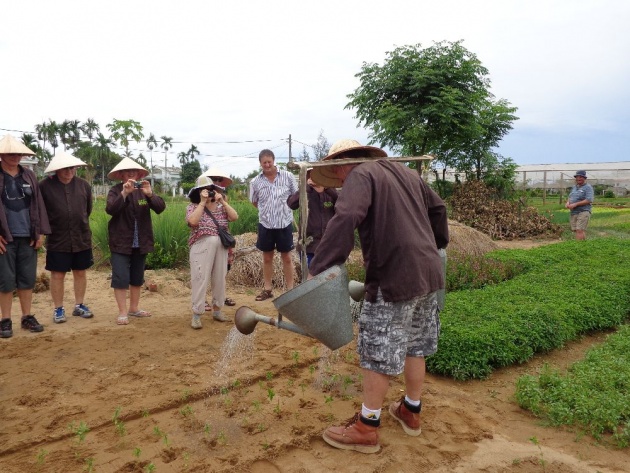
About Vietnam
Travel to Asia has become of great appeal to the global market in recent times. No longer is Asia considered only for the hardy. A natural flow of travellers to the countries of Indochina. With several very important milestones in the last few years – such as lifting of embargoes, government reforms and the opening of borders – Vietnam is positioned to become a popular tourist destination.
It is a little known fact that Vietnam can cater to a large variety of clients – not just those looking to “rough it on the last frontier”. From it’s natural assets; pristine sandy beaches, the wonder of limestone islands in Halong Bay, the mountainous north, to its historical marvels; Cham ruins from the 14th Century in My Son, the ancient tombs of Hue; bustling cities with an energy driven by a new economy, quiet country villages reliant on rice agriculture as they have been for centuries, ornate Confucian temples, high-rises side by side with splendid French colonial architecture; Vietnam is a country of contrasts. And contrast means a greater variety of travel experiences that satisfy a great number of client markets.
It is also largely assumed that infrastructure within Vietnam is poor. Whilst we won’t deny that Vietnam is a third world country, one should not be led to believe that this means third world service! An enormous amount of investment in Vietnam has led to the development of top class hotels, of training schools, of new restaurants, of upgrading and renovating.
And on the subject of service, remember most importantly that Vietnam is Asia – where service is delivered with pride. The Vietnamese people have strong beliefs and values. They are a pragmatic people, with a philosophy to move forward, not to dwell on the past, and a determination to improve the lives of their children. Most of all they are warm and welcoming, and proud to show you their homeland.
For an experience as unique as your clients, look to a destination as unique as Vietnam.
Travelling in Vietnam
As with many countries in Asia, there is a vast array of transportation options at a visitor’s disposal when getting from A to B.
By Road
Vietnam is linked, primarily, by Highway One, an extensive coastal road that commences in the Mekong Delta and finishes in Hanoi. This road feeds the main urban centres of the country and is accessed by an extensive public bus and coach system from the express services to the main cities and the ‘all stops’ service to each district and township.
Railways
The national railway also follows the same north to south route and whilst the trains themselves are upgraded we would only recommend a rail journey on a shorter route to enjoy the scenery. The most popular overnight journeys are from Saigon to Nha Trang, Nha Trang to Danang and from Hanoi to Hue or vice versa.
One journey that is always best taken by rail is from Hanoi to the highland hill station town of Sapa in the far north – the access point for trekking and soft adventure activities.
By Air
Whilst road and rail are fine for the visitor with ample time on their hands most international visitors will prefer to take one of the short domestic flights to access the different destinations in the country. Vietnam Airlines, the national carrier, have a modern fleet and operate a frequent schedule to the main and regional centres, although many flights do tend to leave early in the morning or late in the afternoon.
Rentals
Hire car is available in Vietnam through Budget Rental Car, although with a difference, as you are accorded your own Vietnamese driver rather than driving yourself – highly recommended as driving in Vietnam is not for the faint hearted!
Boats
Besides these main modes of transportation the Mekong Delta is perfect for river exploration. Motorised boats take visitors through this maze of waterways exploring the region or to continue a journey through to Phnom Penh in Cambodia. There are also a number of quality river cruise boats on the Mekong that provides a longer, more comfortable way of sailing up river.
Getting around
For getting around any Vietnamese city or town you will find that taxis are in abundance and are metered. For those that may prefer the old form of transport, the ‘cyclo’ (rickshaw) is still available although it is rapidly being phased out as modernization spreads.
The majority of Vietnamese, however, prefer to get around by motorbike or scooter. You will often find ‘motorbike taxis’ available at most street corners. Helmets are provided and traveling this way is both fast and fun, although it should be remembered that your travel insurance would not cover you should you choose to travel in this manner.



